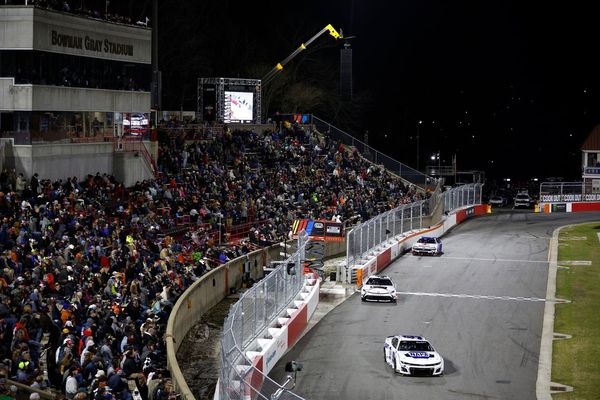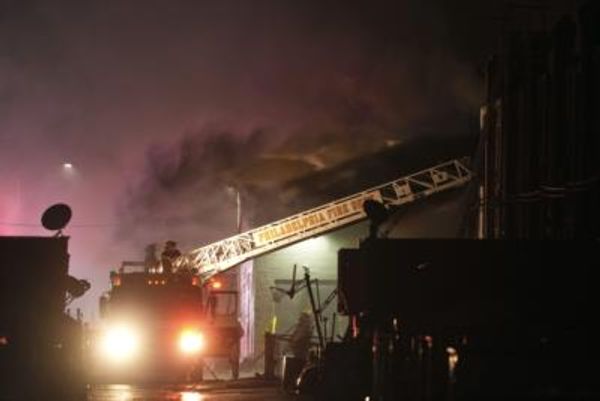
For decades, the city of Chicago has been perplexed about what to do with a 15,965-square-foot parcel of land that sits on State Street, Van Buren and Plymouth Court.
On Wednesday night, about three dozen business owners, residents and city officials gathered to discuss the future of the land, which includes a city-owned parking garage and a small chunk of Pritzker Park.
As part of the C40 Reinventing Cities competition, a global initiative that works with cities and developers to create sustainable buildings, developers are being invited to create proposals for the land and bid to buy the parcel.
“One of the main goals of the C40 competition is to have a carbon-neutral project,” said Cynthia Roubik, the assistant commissioner for the city’s Department of Planning and Development. “Then, of course, we’re looking to leverage the sale of the city-owned lot to have improvements in the future for Pritzker Park.”
Ald. Sophia King (4th) hopes that a new building will rejuvenate not just the site but the entire block.
“I’m hoping that it’s the development that opens [Plymouth] Street up and brings ... some amenity that lots of people would enjoy and open up the existing amenities as well,” such as the Harold Washington Library, Pritzker Park and the surrounding restaurants, King said.
/cdn.vox-cdn.com/uploads/chorus_asset/file/19765670/Pritzker_June_2014_1.jpg)
Michael Edwards, the president and CEO of Chicago Loop Alliance, hopes to see shops and restaurants in the bottom of a sustainable, multi-use building that interacts with the rest of the block — most importantly Pritzker Park, which dominates the space and is one of the only green spaces on State Street.
“Introducing a little bit more private investment — private coffee shops and those kinds of things — could really activate that end of the street,” Edwards said.
The park hasn’t served as a refuge in the middle of the city, in part because of the amount of traffic and L tracks nearby, said Ernie Wong, president of Site Design Group, a Chicago landscape architecture group.
“It’s a very challenging site because of its location,” said Wong. “Unfortunately, it’s been pretty much underutilized over the years.”
This future development will become part of a history that includes a movie hotel, a famous restaurant and a frustrating park.
/cdn.vox-cdn.com/uploads/chorus_asset/file/19765677/Yoga_in_Pritzker_Park__2.jpg)
Dating back to the 1800s, the block was home to rough-and-tumble businesses like the famous Plymouth Hotel at 22 W. Van Buren St. Below it was the Dill Pickle, a restaurant known for its incredible corned beef sandwiches.
The hotel was a hotbed for prostitution and gambling, but became famous after it was shuttered when it served as a filming location for the 1980 movie “Blues Brothers.” There, Jake Blues (John Belushi) bunked in the tiny room rented by his brother Elwood (Dan Aykroyd) and asked, “How often does the train go by?” To which Elwood answers, “So often you won’t even notice it.”
The movie led to many more being shot in the city.
“It was realized that allowing movies to film in the city was a great economic driver,” said Tim Samuelson, the cultural historian for the city.
The hotel was demolished in 1991 to make way for new businesses and Pritzker Park, causing an uproar from moviemakers and Chicagoans who mourned the loss of an authentic piece of the city.
“People kind of wrote them off and said good riddance,” Samuelson said while looking at the original key to the Plymouth Hotel he recovered before its demise. “Having been in the whole building and walking through it and seeing the rooms … it wasn’t a bad place.”
After the rubble was cleared, a small park sprung up, becoming the first green space on South State Street. In 2008 the land was bought by the city and the park was named after Marian “Cindy” Pritzker because of her contributions to the creation of the Harold Washington Library.
Pritzker Park was redesigned and began featuring art, including a 30-foot-tall eyeball created by Tony Tasset in 2010. A small concrete garage popped up next to the Plymouth Restaurant and Bar, a favorite of many Chicagoans.
/cdn.vox-cdn.com/uploads/chorus_asset/file/19765686/32a.jpg)
In an effort to bring more people to Pritzker Park, the Chicago Loop Alliance added metal seats with large red umbrellas in 2014.
The city is accepting public input on the site until March 31. After that developers will be able to pitch ideas, with the goal of selecting three finalists by the end of the year, officials said Wednesday night. The city said money from the bids could be used to update Pritzker Park as well.
King says she is open to all possibilities as long as they bring positive change to the block.
“I must admit, I’m hoping that I’m wowed by someone else’s vision,” said King, who plans to hold smaller meetings with community members.







